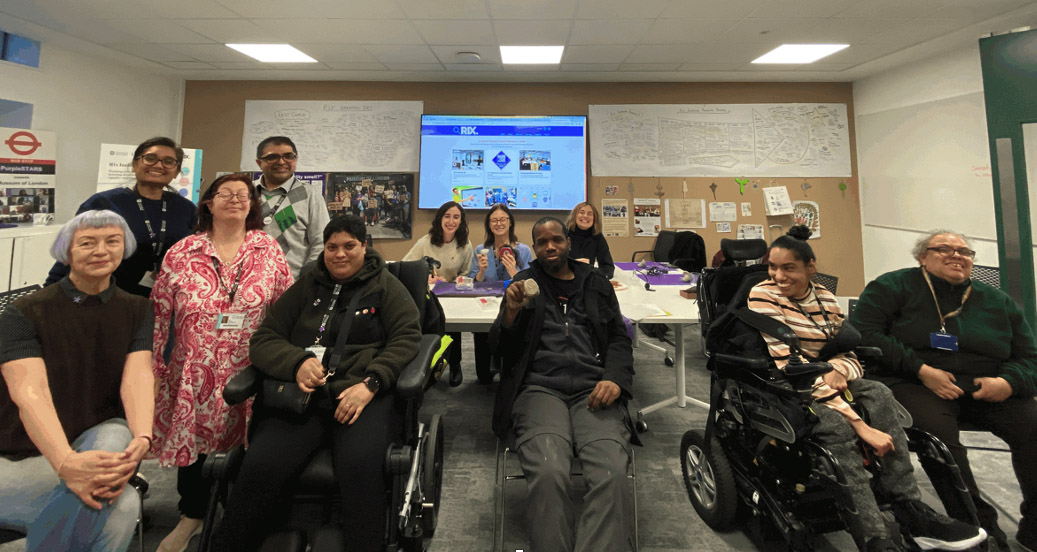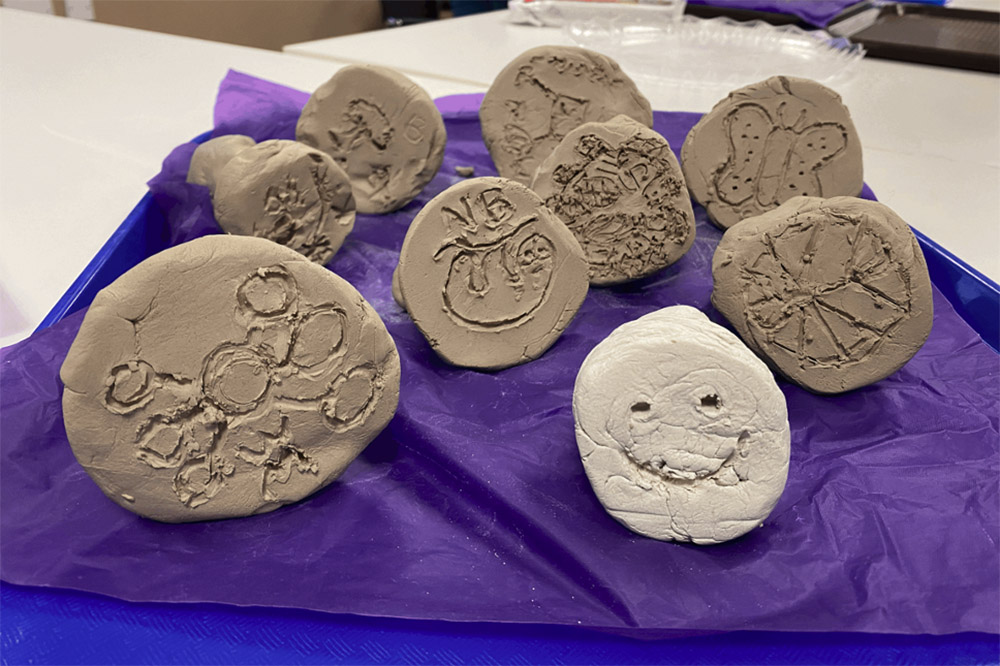In our recent collaboration with The National Archives, Natalie and Sarah from the Education Department visited our newly established office at the Royal Docks Centre for Sustainability on January 30, 2024. Building on insights gathered from our previous trip, this feedback session sought to develop strategies to enhance the accessibility and inclusivity of the collections at The National Archives.

In close collaboration with our co-researchers with lived experiences and purpleSTARS, this session explored alternatives to ensure that the museum exhibits cater to diverse sensory sensitivities. The discussions centred around creating an environment where historical artefacts and exhibits can be appreciated by everyone.
After our previous trip to The National Archives, we explored innovative ways to share items from the collection with sensory dimensions. Using materials such as coconut husks and old books, visitors could better understand historical artefacts with an interactive experience. Drawing inspiration from previous collaborations with museums, sensory boxes and virtual experiences were also explored as alternatives to the museum experience.

The incorporation of easy read materials, audio experiences and hands-on activities also emerged as key strategies to make historical information inclusive. We also tried our hands at designing our own seals, a replication of the historical seals shown at The National Archives. This hands-on activity not only provided active engagement with historical materials but also added a personal twist to the museum experience.
By including sensory experiences in the museum experience, we hope to make historical information accessible to a broader audience. We recognise the importance of empowering individuals through knowledge, especially for individuals with sensory sensitivities.
What we thought of the session
What was one important thing you learnt from the session?
After visiting the National Archives, I realised the importance of keeping the old collections safe. It provides us with an understanding of where things come from, who they belong to, who they are for, and what is their purpose.
There were lots of old collections such as old files, books and stamps that are important to understand history.
What was your favourite moment from the session?
My favourite moment is seeing and recreating the seal stamps, as it reminds of putting stamps on letters and leaving a signature.
I enjoyed creating my own seal with purpleSTARS, designing and incorporating the Wiki design into my seal.
Have you got any tips for The National Archives to make it more accessible?
A lot of the collections were hard to read because they were in a different language, so translation into English is needed.
Some of the old letters and files were also in different formats and handwriting, which made it challenging to read. Having an easy read version would make it more accessible for everyone.
What worked well about the session and what didn’t work so well?
The session worked well as we were able to come down to visit the old archives, which were kept safe and secure. There were staff members that showcased the collections, allowing us to get a better glimpse and understanding of the materials. This helped us with coming up with ways to improve the accessibility of the materials.
Written by Synne Lim

